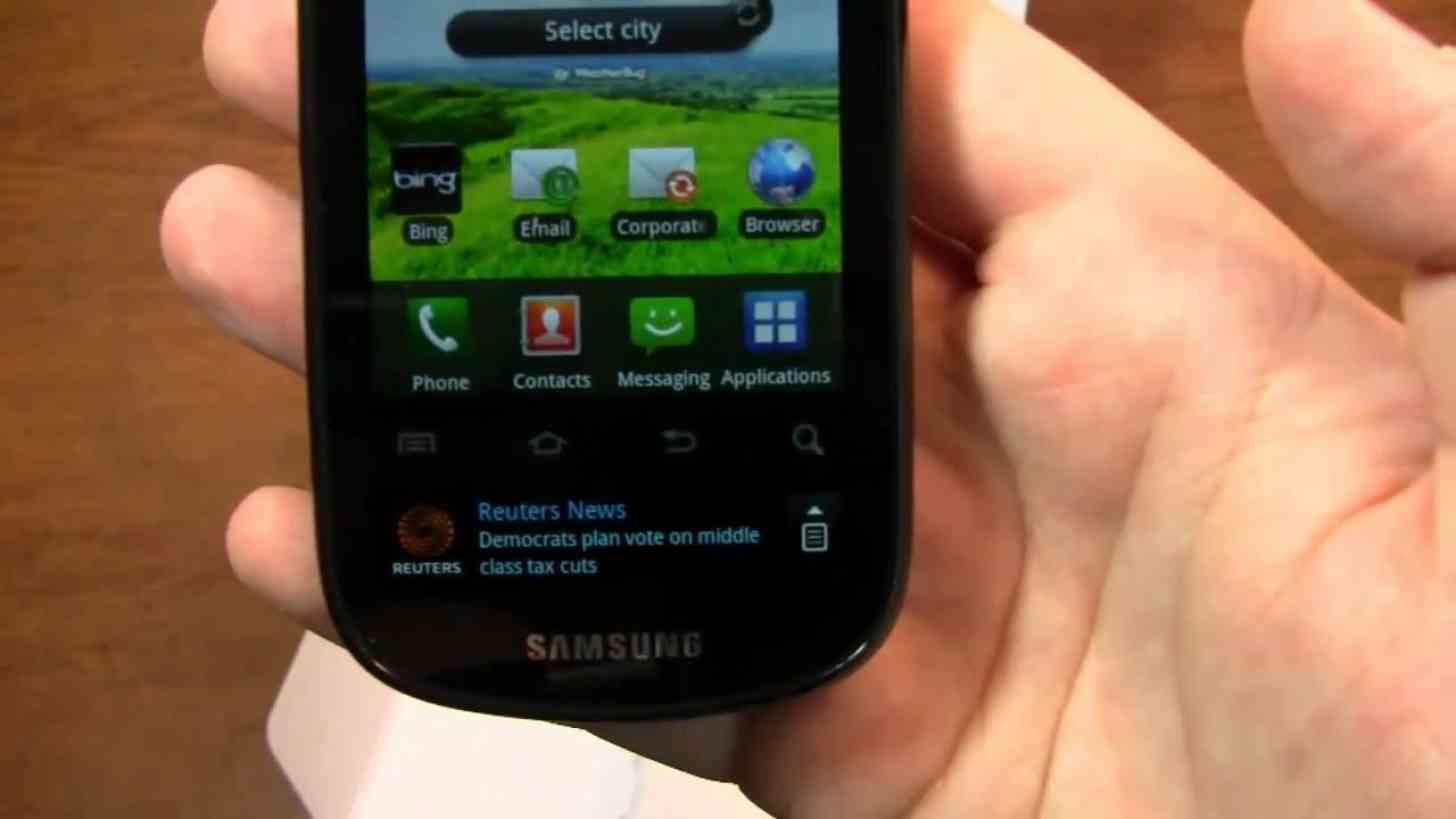
When I think of a phone with a secondary display, it isn't LG, or even HTC, that comes to mind first. It isn't even a high-end phone. It's actually Samsung that warrants first dibs. Some of you might not even remember that Samsung was first on the scene with an Android-based smartphone that offered a secondary display, which was meant to serve as a companion to the main screen.
That phone was the Samsung Continuum.
It was a small phone, which was, back in 2010, still the norm. (Before Samsung changed that for everyone, too.) Specifically, the Continuum was rocking a 3.4-inch main display, and underneath that was a 1.8-inch secondary "TICKER" display. That's right, even Samsung knew exactly what was going into that secondary display, and they named it properly.
That 1.8-inch AMOLED panel was meant to deal with notifications, like text messages and other things, so that it didn't take up screen real estate from the main display. Unlike LG and HTC, though, the Continuum's secondary screen was actually below the main panel, which, honestly, didn't really feel all that great, but mainly because the phone was so small to begin with.
Now? A secondary display on the bottom of a giant phone like the LG V20 or the HTC U Ultra might actually work.
The Continuum was way, way ahead of its time and it didn't really take off. It didn't even manage to garner a sequel! LG, meanwhile, has already launched the V10 and most recently the V20, so the company sees some worth in that lineup. (I'm sure just having options, without having to bridge features into one product lineup, is primarily the reason.) Who knows whether or not HTC will launch a U Ultra successor next year, or if any of their other flagship Android handsets will boast a secondary display.
I remember trying out the Continuum way back when, and while the secondary display was interesting enough, it wasn't a great enough feature at the time to keep me using the phone -- especially with its other drawbacks. And while the initial specifications for the LG V20 caught my eye, that secondary display wasn't one of them.
We have a few different gimmicks when it comes to displays on smartphones, with curved screens getting a lot more focus these days -- which will get an even bigger boost if Apple does launch an iPhone with a curved panel. Secondary displays are just another option, but while I can see the functionality boosts, in some cases, I'm just not sold on the idea or the execution up to this point.
Back when the Continuum launched, Samsung wanted to free up screen real estate, because the phone's main display wasn't that big. But that really isn't the case anymore, is it? Plus, notifications are getting more advanced, so you can do more with them, like respond to a text message, rather than just watch them take up space and wait for them to disappear.
And as I mentioned earlier, on these big phones a secondary display might be better placed below the main display. Sure, when the phone's resting on a table or desk next to you, it doesn't matter where the secondary screen is. But if you've got a 5.7-inch phone in your hand, and you want to use it one-handed, some folks might find it uncomfortable trying to reach up to the very tip-top to take action on a notification. (Of course, with notifications popping up on the top of the display anyway, this "issue" might still be present for most.)
What about you? Did you pick up the LG V10 or V20? How about the HTC U Ultra? And if so, did you do it primarily for that secondary screen? Are you still a fan of it? Let me know!